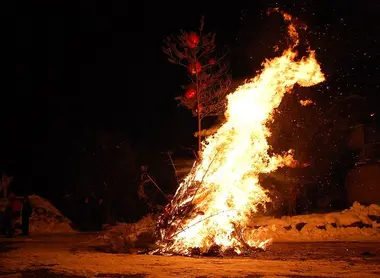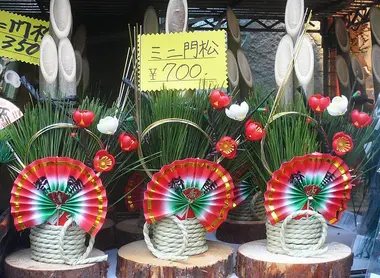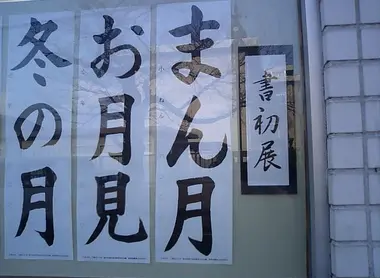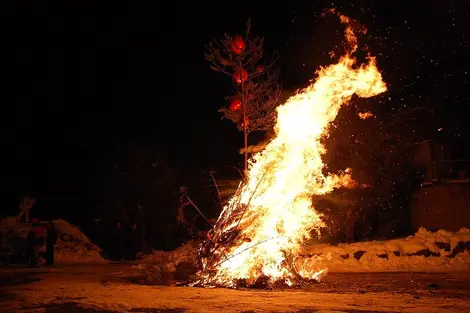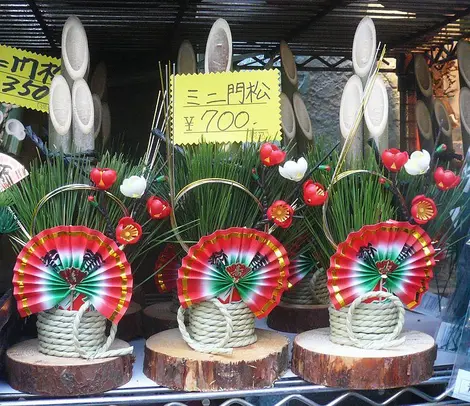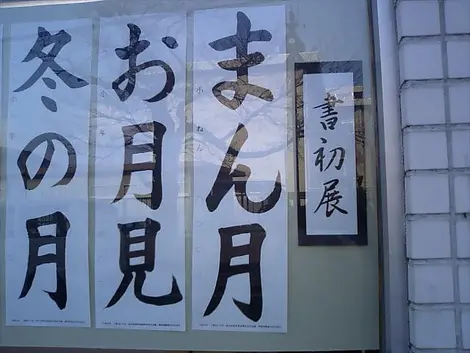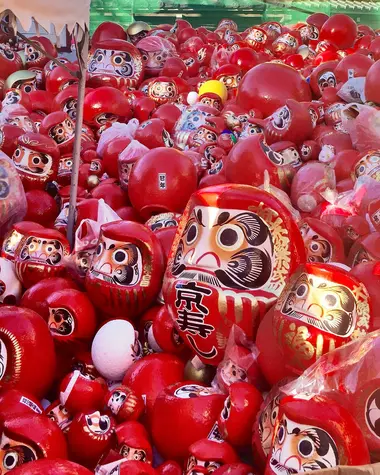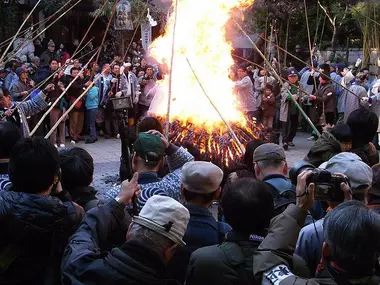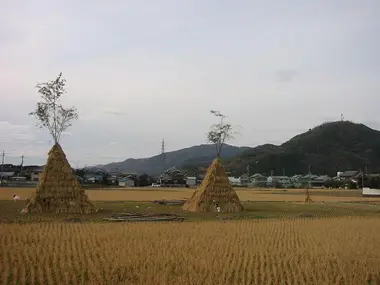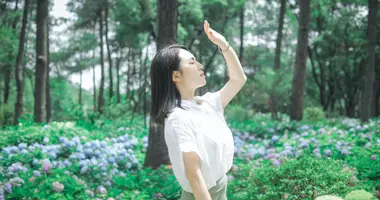Dondoyaki どんど焼き
- Published on : 02/08/2018
- by : S.R.
- Youtube
Lucky smoke
The Japanese are used to buying many decorations for their homes at the end of the year celebrations. Once the season has passed, it is traditionally inauspicious to discard these decorations, as is using them again (being intended for the gods, reuse could be considered disrespectful). Then came the Dondoyaki!
The bonfire of happiness
Around January 15, pyres are being raised all over Japan. Built with straw, cedarwood, bamboo, or reeds in open places (courtyard of a temple, river bed, fields), their function is to swallow in flames these decorations, which the Japanese don't know what to do after the holidays. Among these are the kadomatsu (threshold pine) displayed at the entrance and representing longevity, the shimekazari (woven decorations), or the Kagami mochi. In addition, the famous Daruma also fuels sure fires, as do the kakizome, the first calligraphies written at the start of the year.
- Read also: Daruma-dera
Very different meanings
Many legends surround the benefits that Dondoyaki would bring. Thus, warming up near the flames would make you rejuvenate; seeing his kakizome burn and end up in wisps of smoke in the sky would improve the quality of his calligraphy; spreading the ashes of the stake over a field would give vigorous shoots. It is the same for lucky charms or various charms accumulated during the year to improve one's luck.
- Read also: Japanese temple lucky charms.
It is also with the idea of bringing luck to oneself that it is pretty common to see Japanese people with a stick in hand, with mochi, a piece of orange, or dango grilling on the fire at the end. The custom says that eating these foods cooked by the Dondoyaki brazier would bring good health.
Where to see the stakes?
As said above, Dondoyaki is a tradition that is respected throughout Japan. The setting up and lighting of the pyres take place between 14 and 18 January. If you are in Tokyo at this time of the year, you can go to the Setagaya ward. A bonfire is erected on January 18 of each year at 10:30 am, on the bed of the Tamagawa River, about twenty minutes on foot from the Futakotamagawa metro station. The largest Dondoyaki takes place in the city of Tokushima, on the island of Shikoku.
